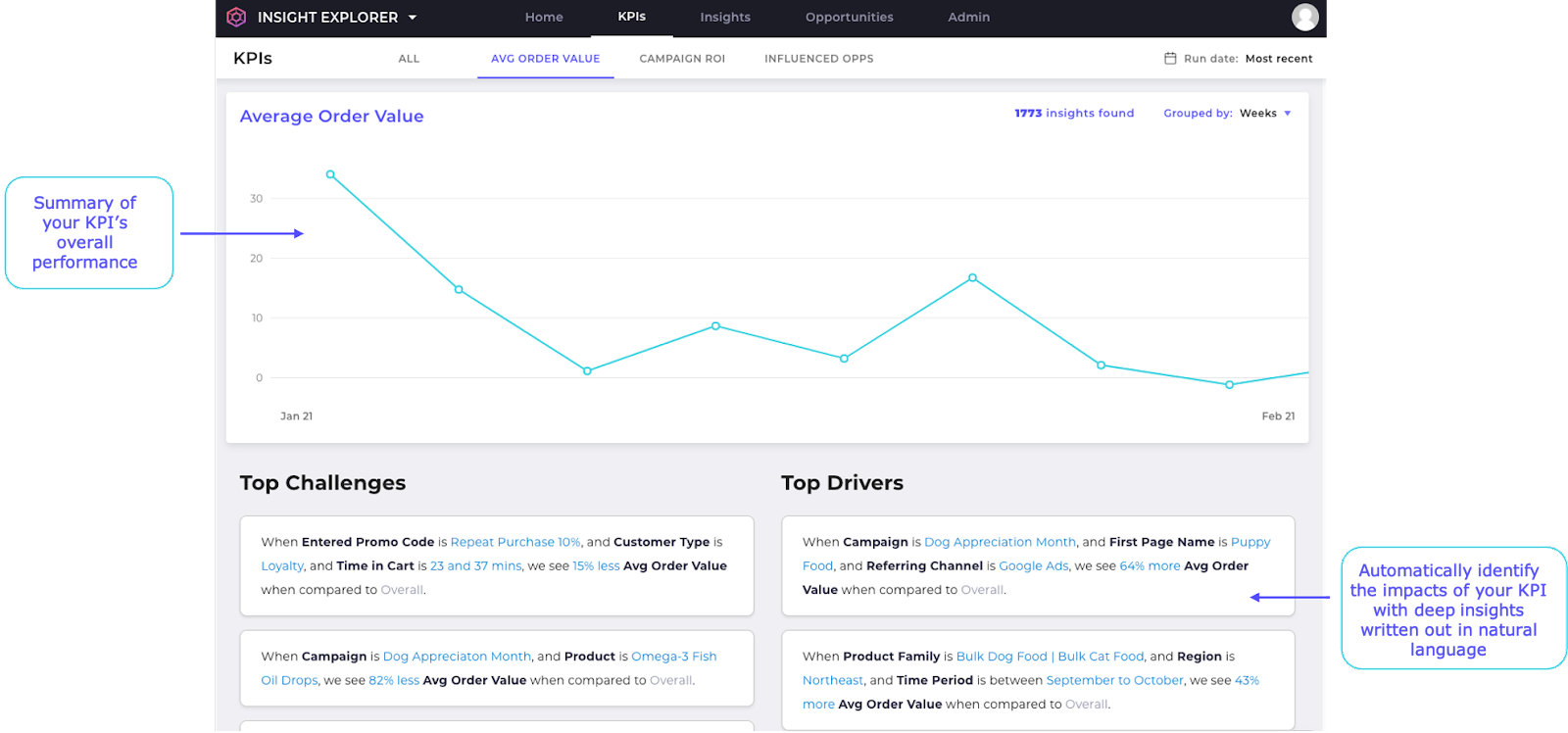Recently, I came across a post on Reddit that asked, “How do you handle data illiterate management?” The question turned out to be more about resource allocation than data literacy, but it got me thinking… how do business leaders make confident data-backed decisions if their data literacy is equivalent to an unfinished Duolingo course?
The answer, to most, is obvious; that’s why you have a data science team. But relying on a data science team to collect, prep, visualize, analyze and then have to explain your data to you is slow, expensive, and prevents your team from taking on bigger projects.
According to Gartner, poor data literacy is the second-largest internal roadblock to the success of the CDO’s office. Yet, by 2023, data literacy will become essential to driving business value.
Enter automated analytics. Tools and systems designed to help speed up part or all of the analytics process. In addition to accelerating data analysis, a good automated analytics system will help you better understand your data, leading to deeper insights and further closing the data literacy gap.
Automated Analytics Can Help Businesses Get to the “Why” Faster
We talk a lot about getting to the “why” behind your metrics. Finding out “what” is happening in your business is the easy part, but unless you can understand “why” it’s happening, you’re never truly going to understand the data. Automated analytics tools help businesses get to the why faster when they are able to both automate the data preparation and find deeper insights.
Automating data preparation helps to speed up analysis and improve data quality. Poor data quality has led to an average of $15 million in losses each year. With less time spent on preparing data and more trust in the data you’re working with, businesses can start taking action on the opportunities in their data, faster.
Some automated analytic tools, like Unsupervised, can also help to surface deeper insights than traditional data analysis. Insights by definition, are the understanding of a particular issue gained by analyzing information. Typically, insights are found by asking questions and analyzing data to formulate an answer. By leveraging unsupervised learning, Unsupervised removes bias from data preparation and is able to find answers for questions you would never think to ask. To find deeper insights, you have to truly dive deeper into the data. For example, generating insights by looking at small patterns with high-correlations — something data science teams don’t often have the time to dive into.
Stay Focused on Key Business Objectives with Automated Analytics
It’s one thing to automate analytics to find deeper insights but if those insights aren’t tied to key performance indicators (KPIs) they’re not much help. Automated analytic tools that prioritize insights based on KPIs are one of the best ways to help close the data literacy gap. No matter where a department leader falls on the data literacy scale, they should know how to talk about their goals and understand the metrics impacting them.

Using an automated analytics tool that helps teams identify, track, and prioritize insights based on their most critical KPIs can help employees become more confident about discussing data since it’s familiar to them. In return, this opens the door to more data-backed conversations as their confidence in discussing data grows.
Automated Analytics Empower Data Analytics Teams
So much of a data scientist’s job is focused on preparing data, that it leaves little room for the actual analysis and strategizing. By automating data preparation, data teams have more time to focus on opportunities that lead to revenue growth. Automated analytics tools aren’t an end-all solution to the data literacy problem but they help organizations get one step closer to closing the gap. Because automated analytic tools don’t require users to be data scientists to pull insights, it helps employees access data without the need for an interpreter.
Ultimately, more education and training around data is required in order to truly improve data literacy across an entire organization. The need for data literate employees is only going to grow as data continues to get more complex. Considering, an estimated 11.5 million jobs in the field of data science will be available by 2026, data literacy will be one of the most valuable professional skills for any employee to have.
Data literacy leads to data confidence. When you have confidence in your data, making data-driven decisions is easy. To learn more about how Unsupervised’s automated analytics platform is helping businesses make more confident business decisions, speak with an expert today.








